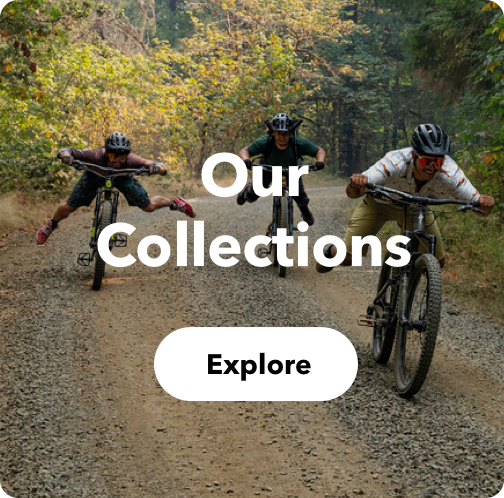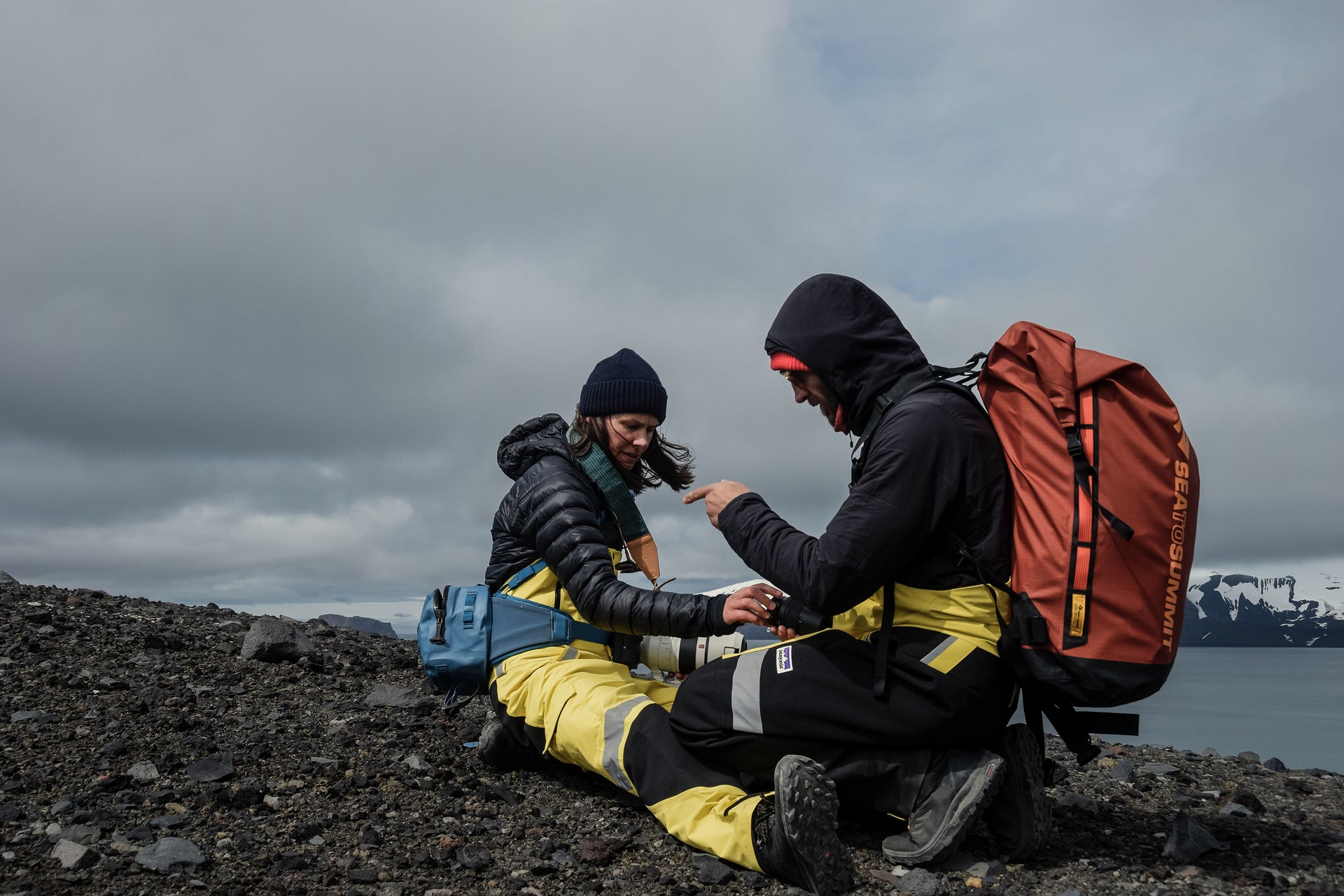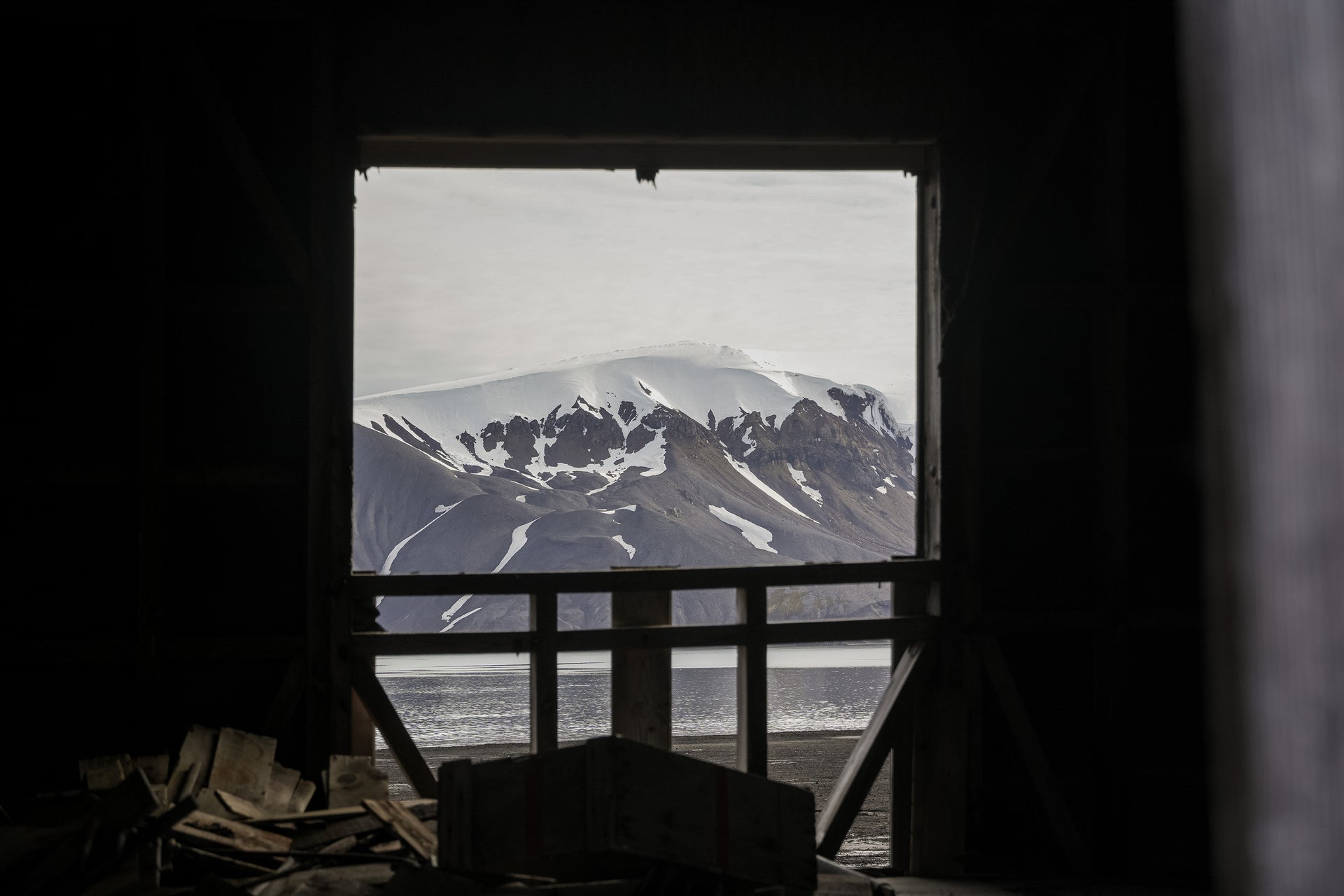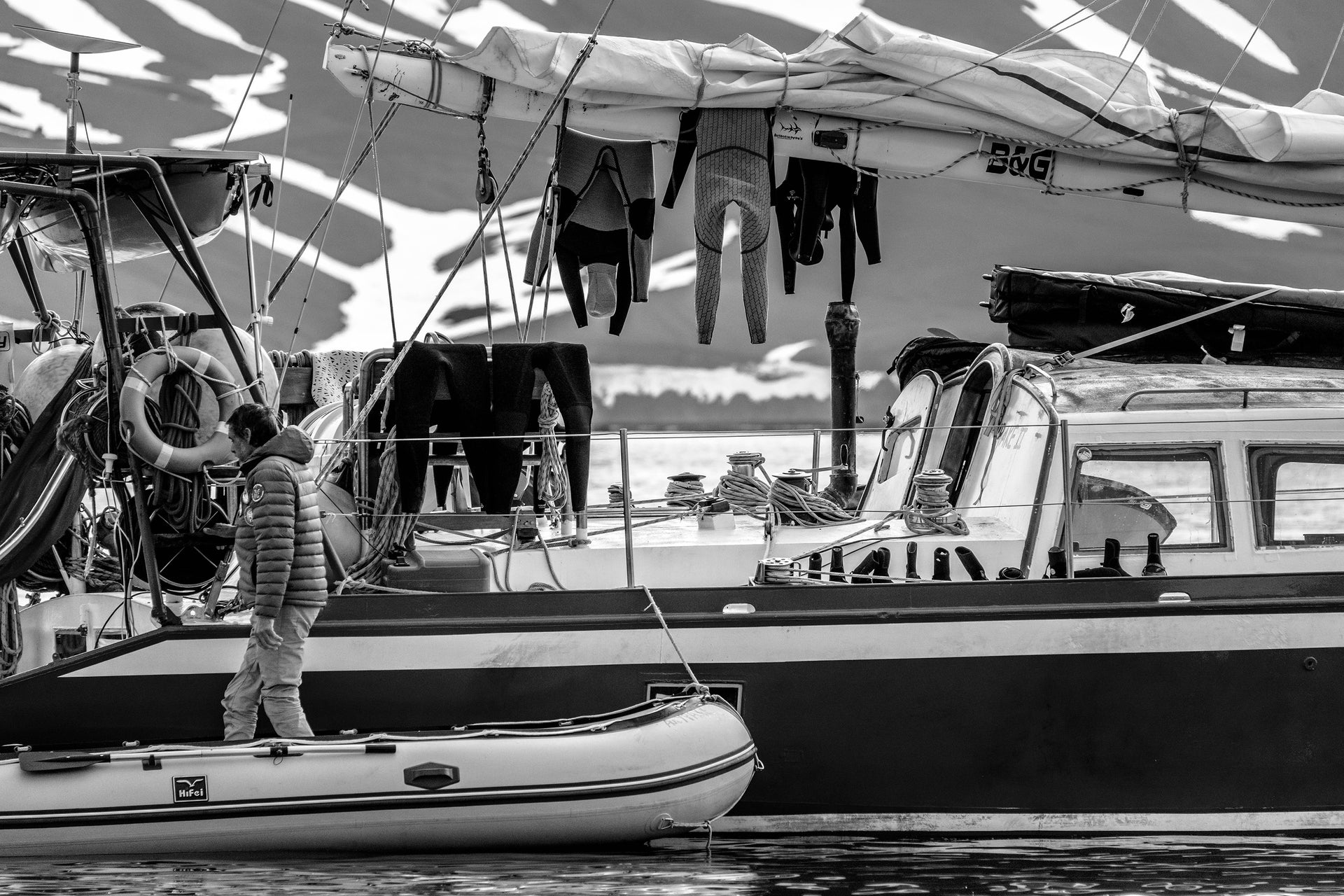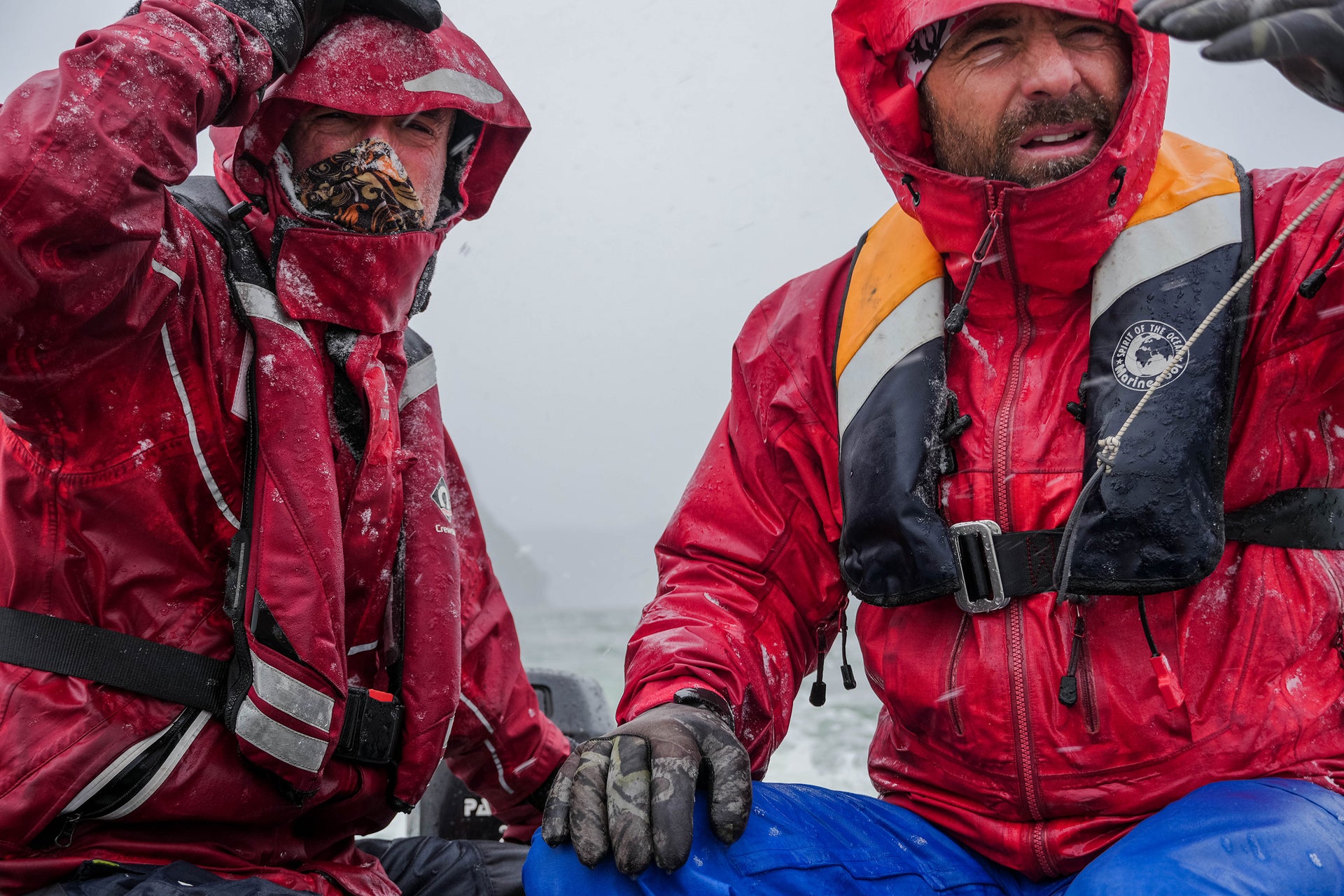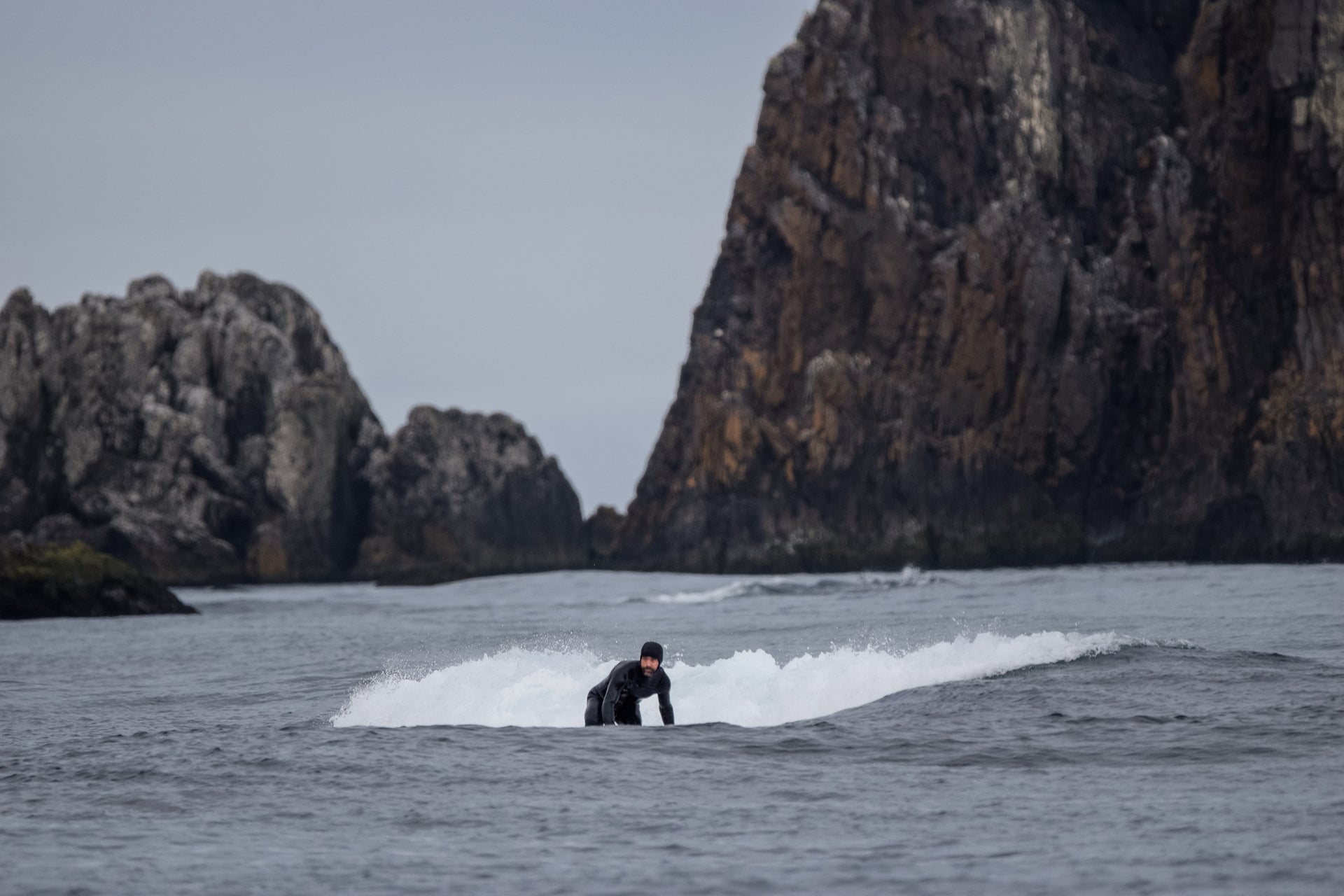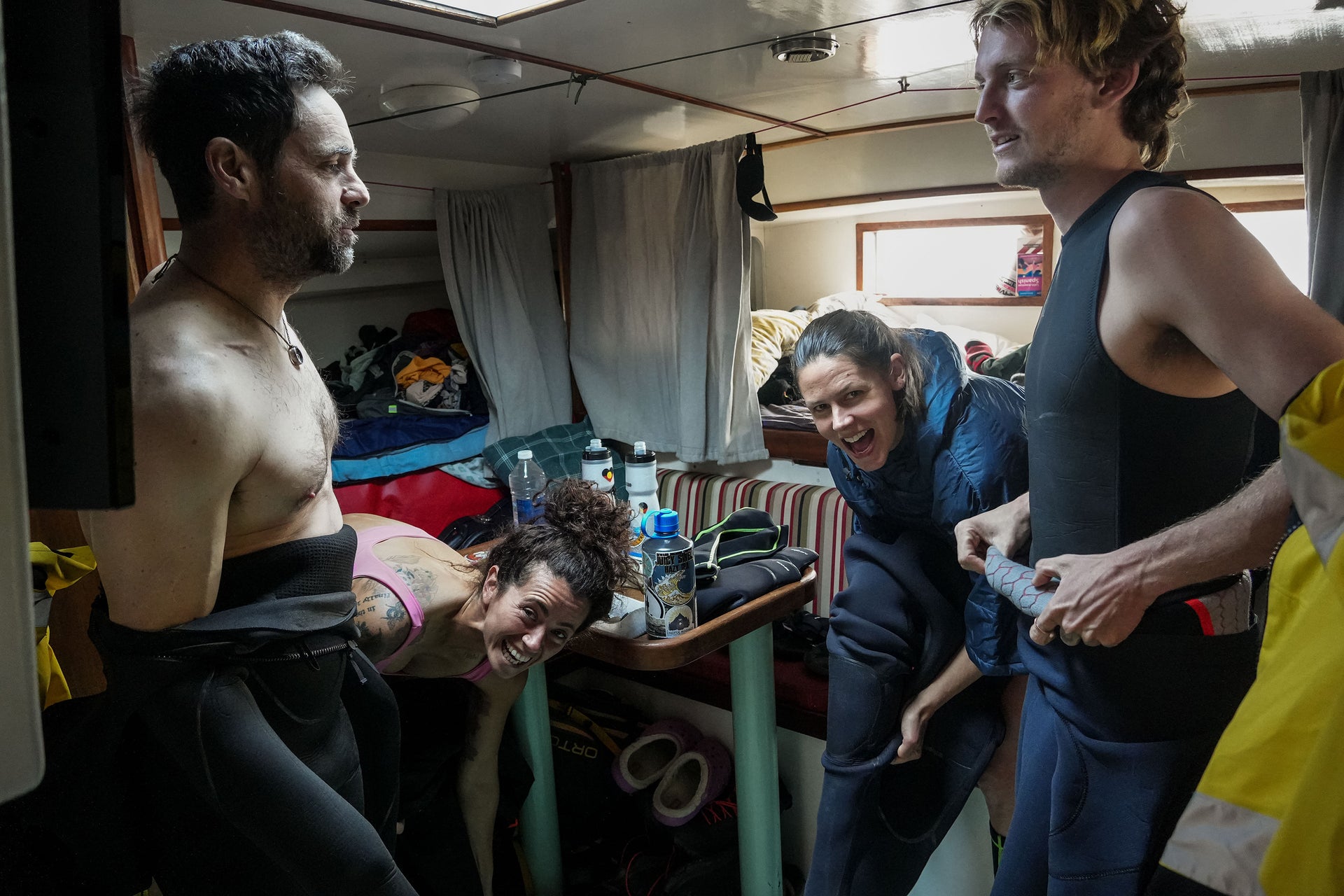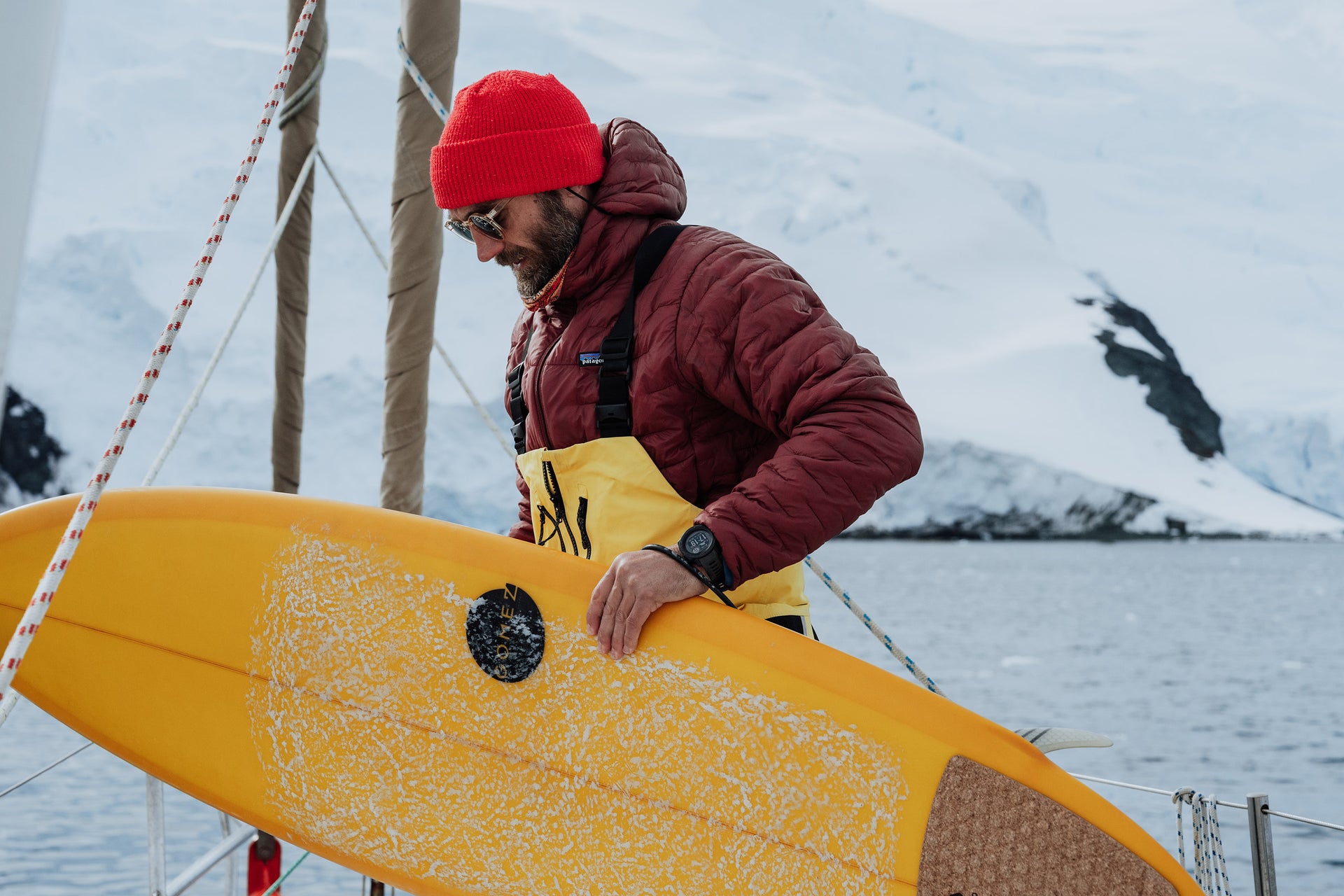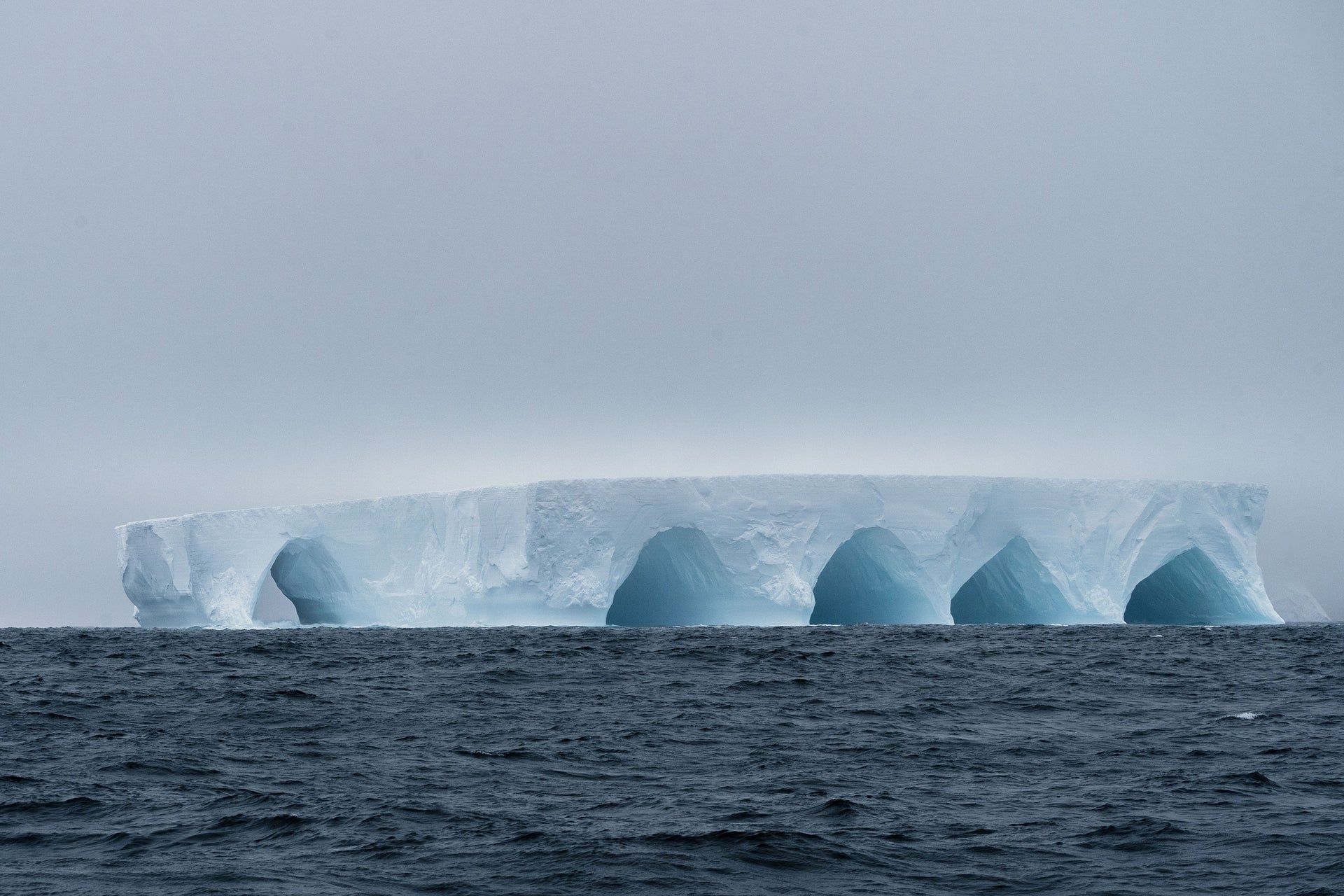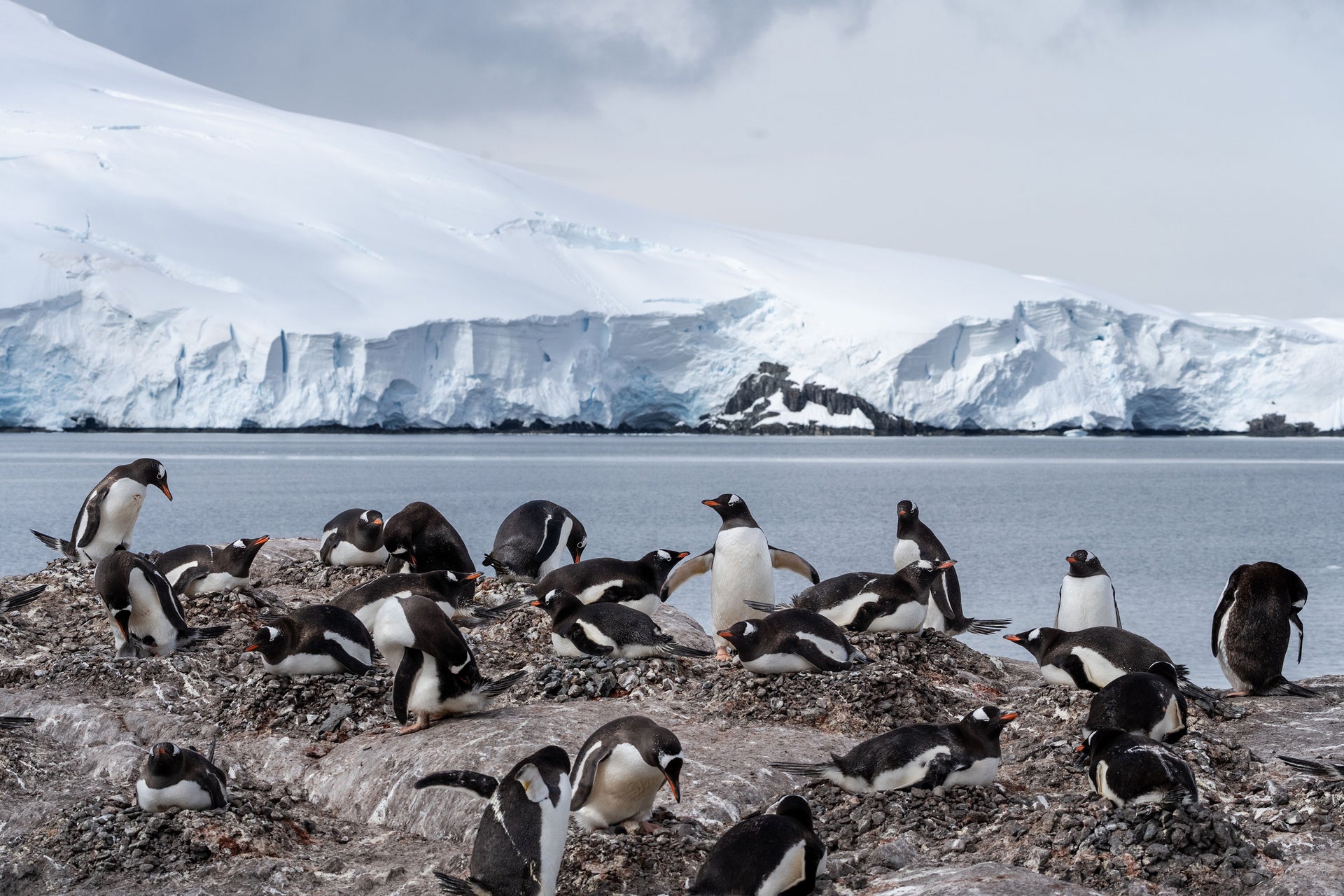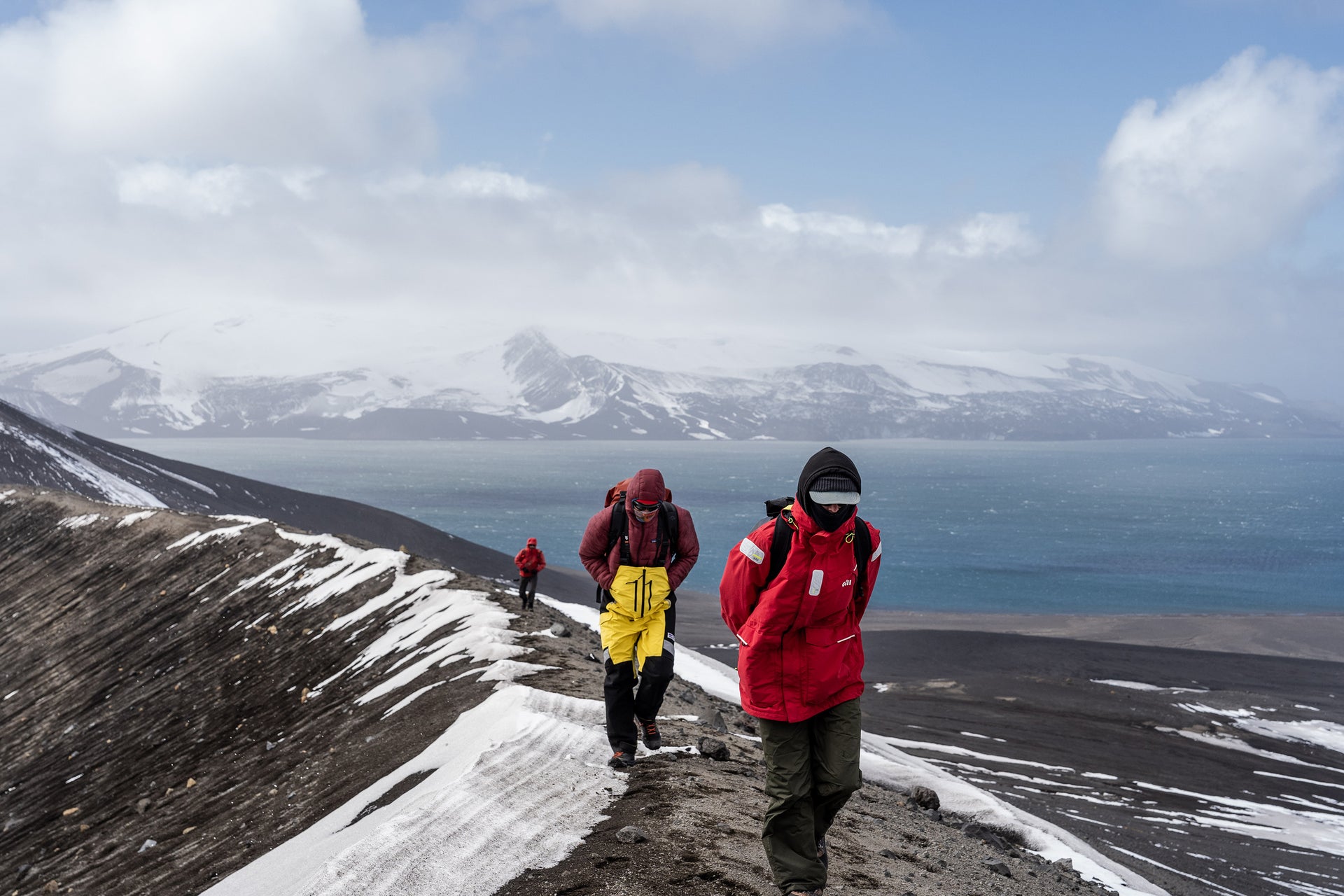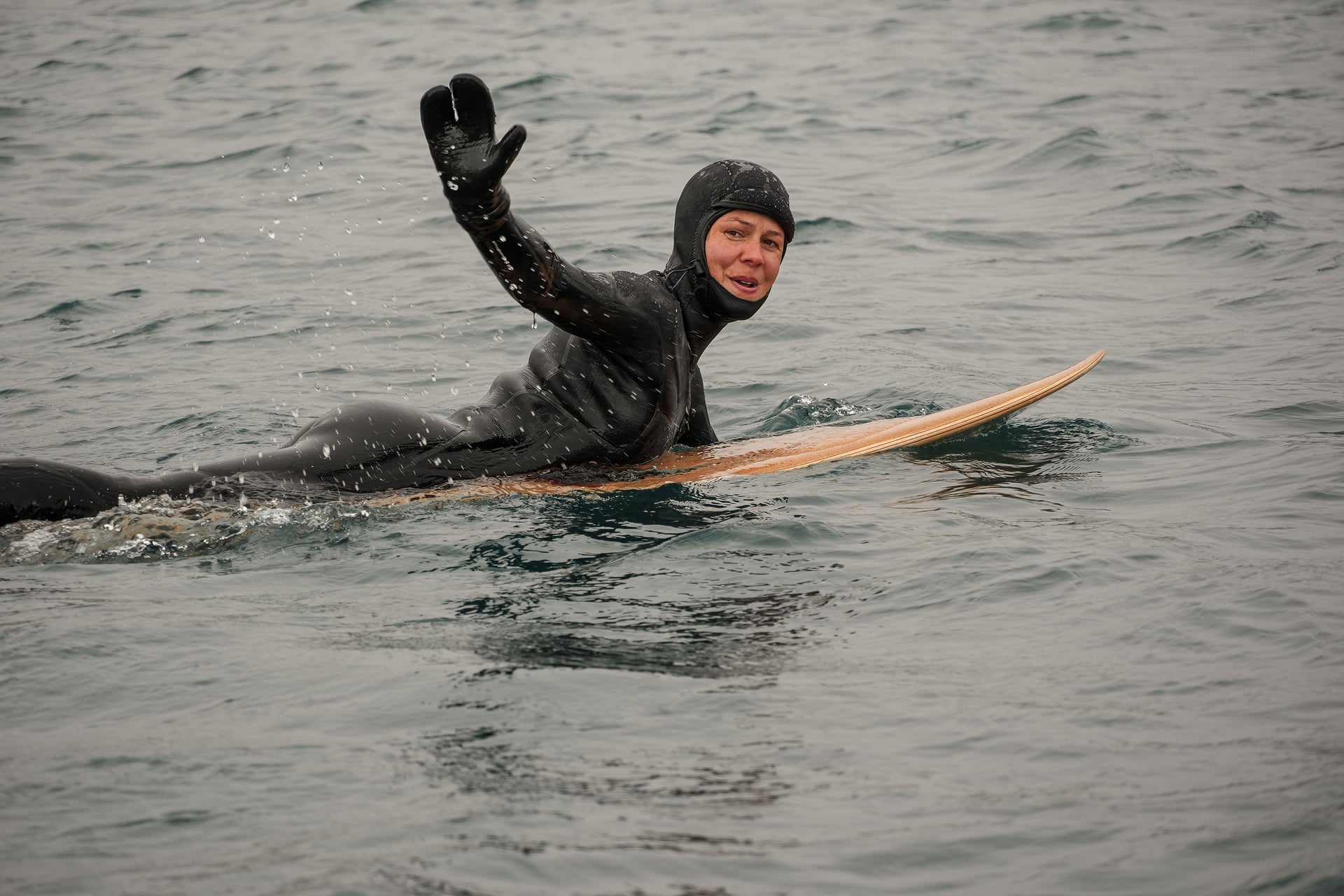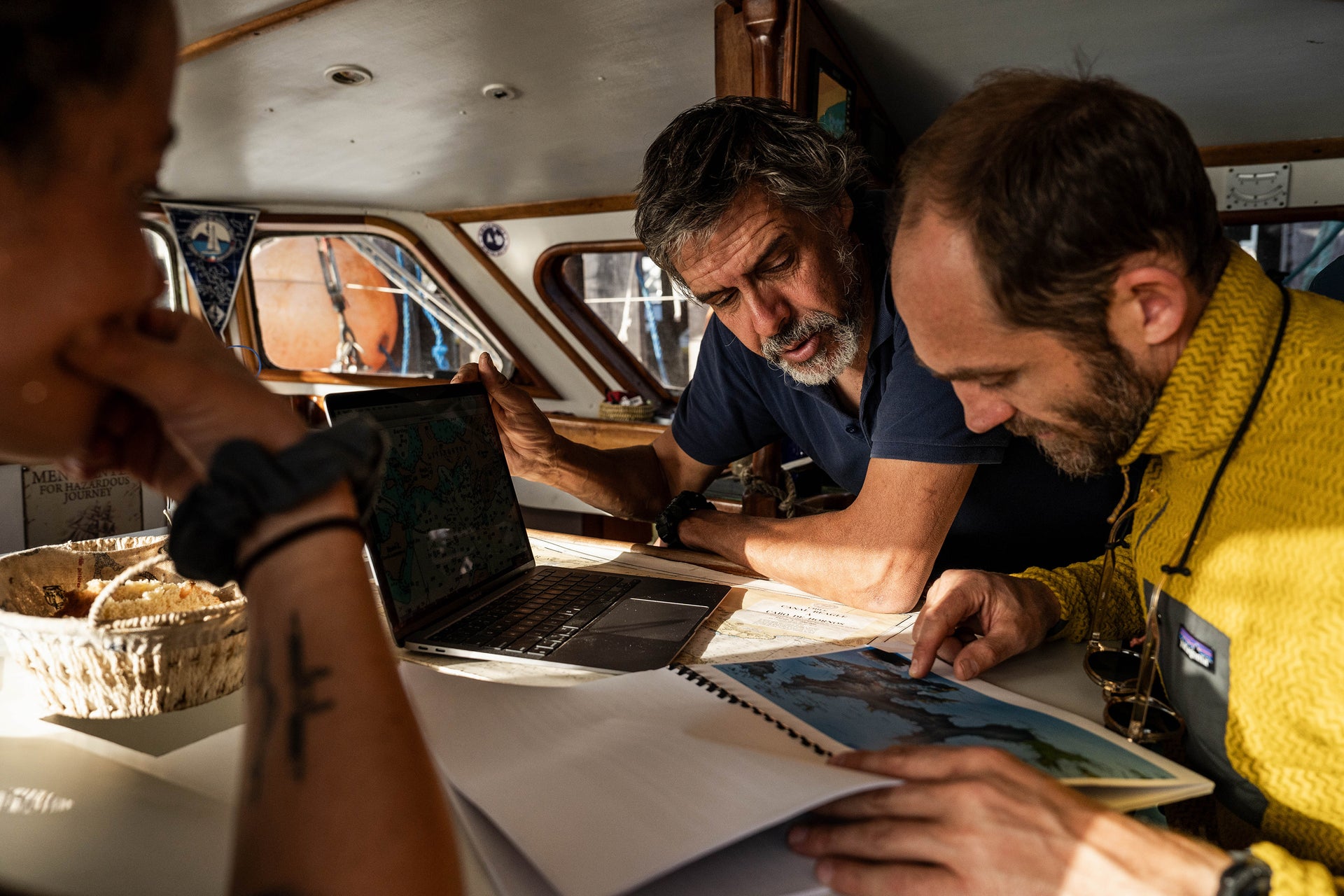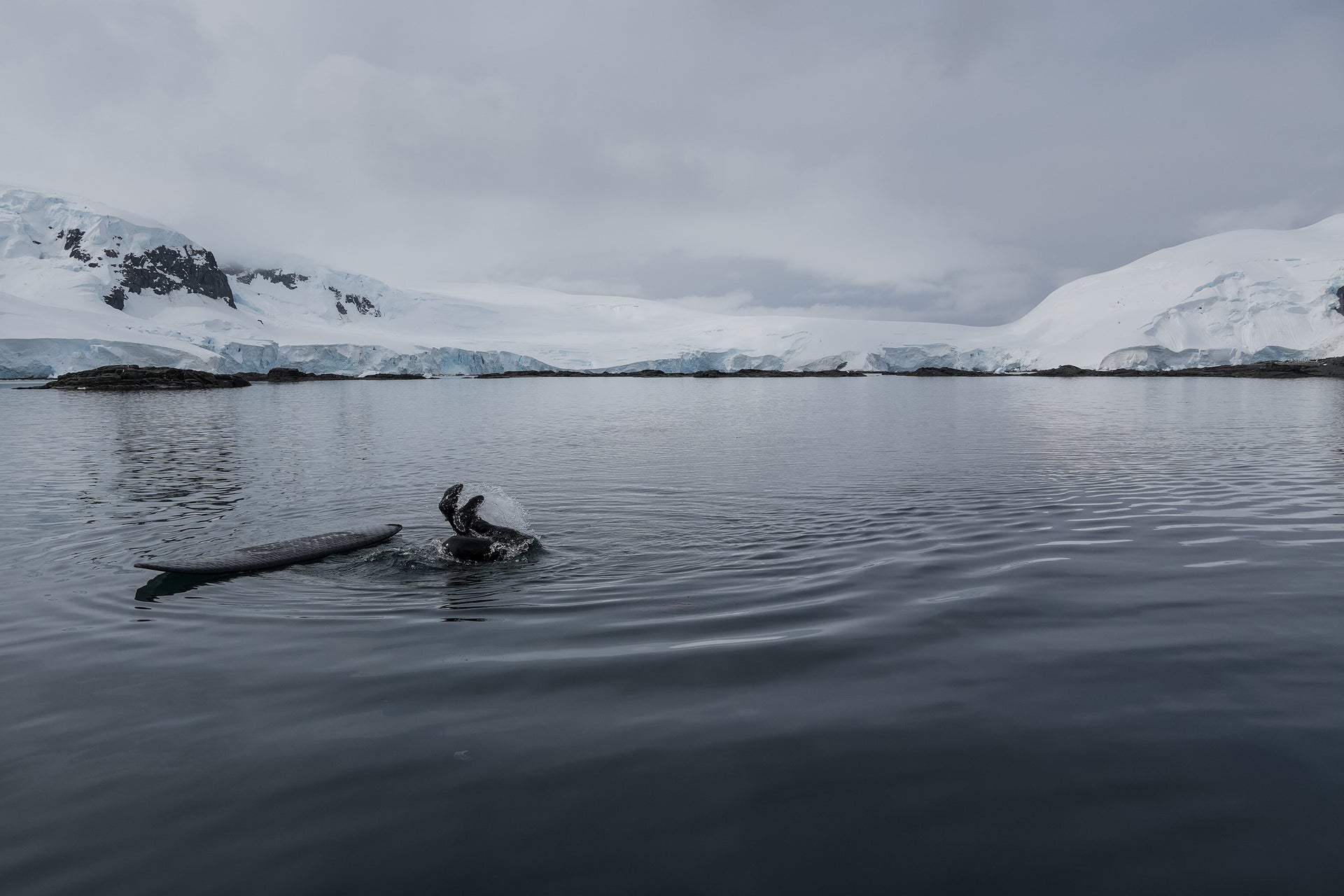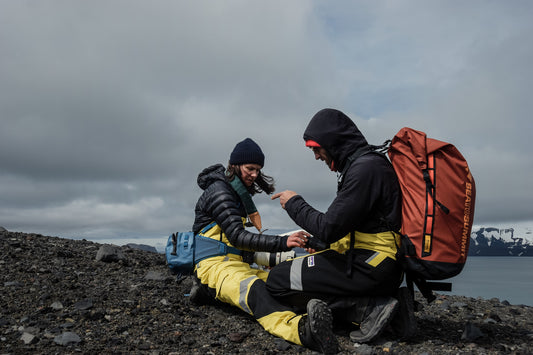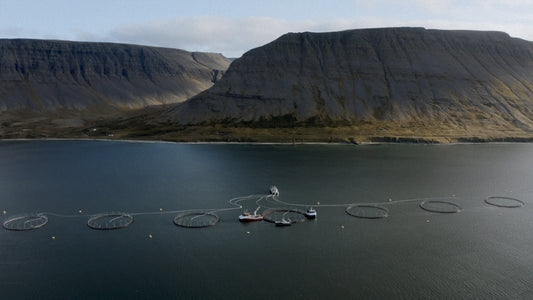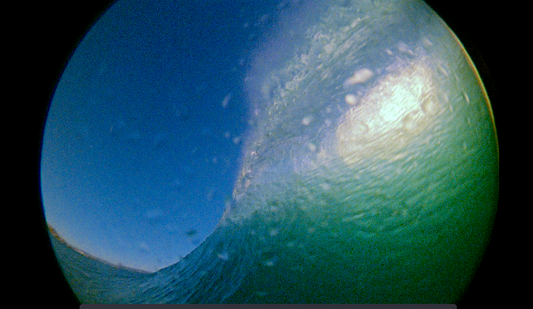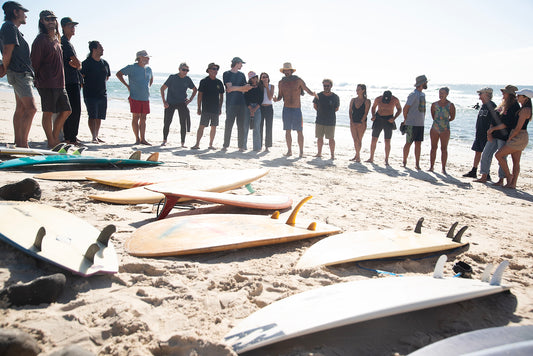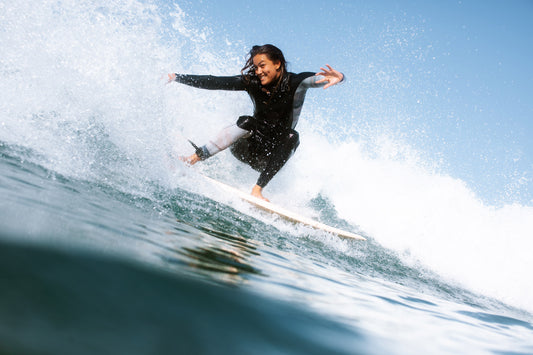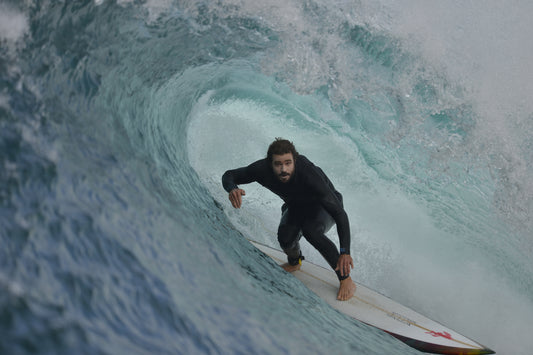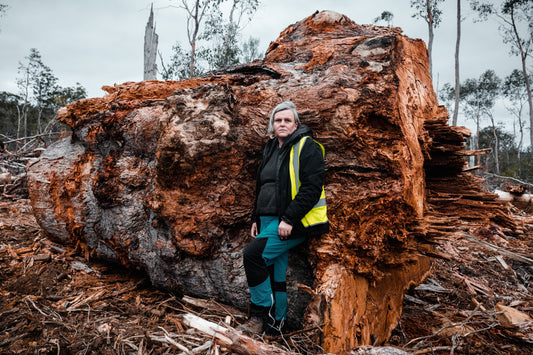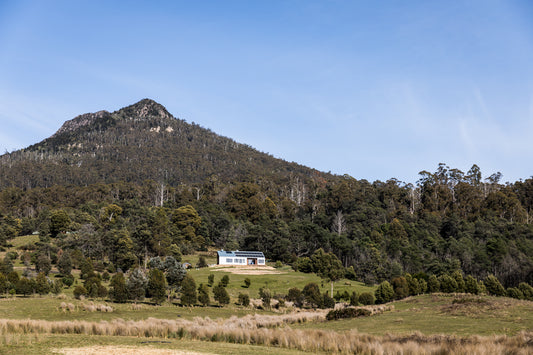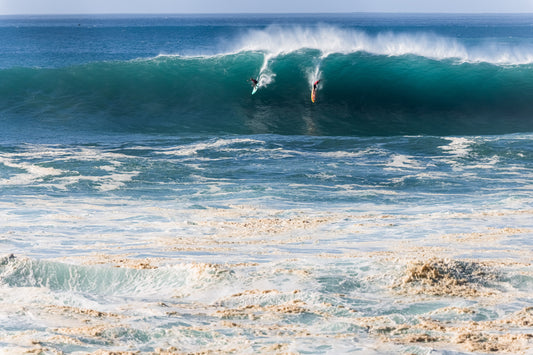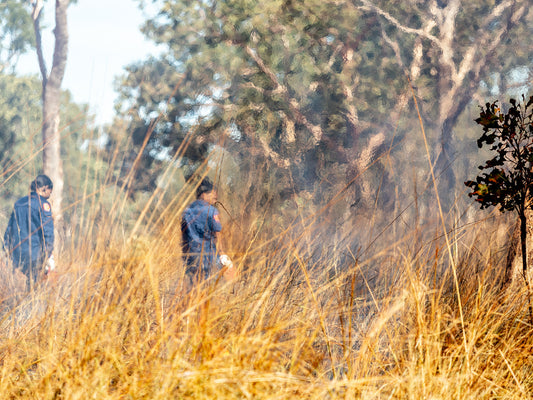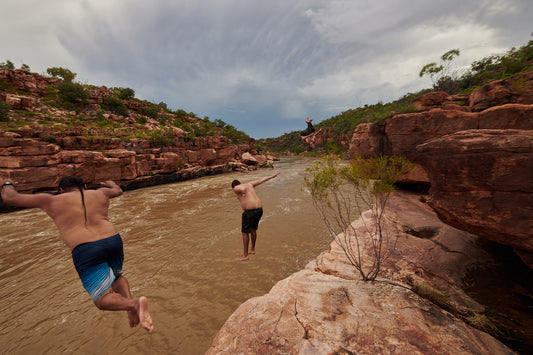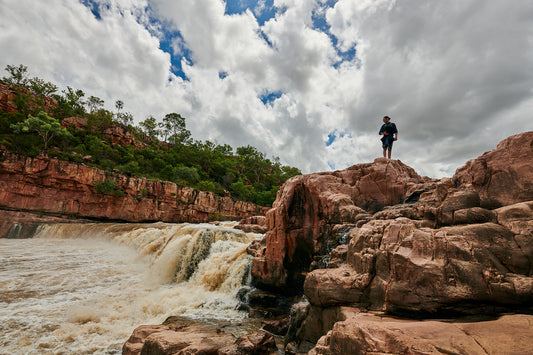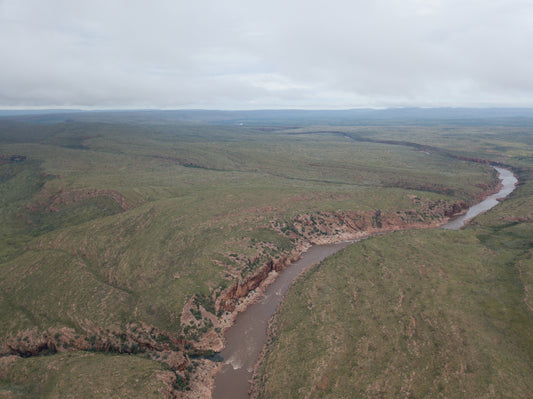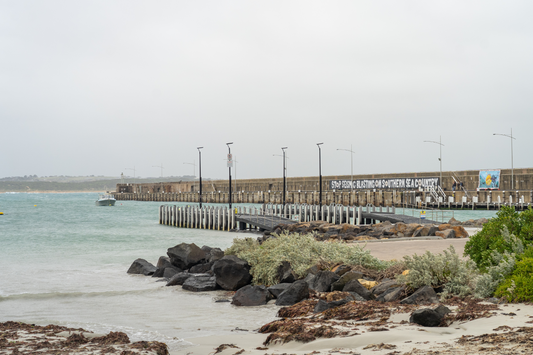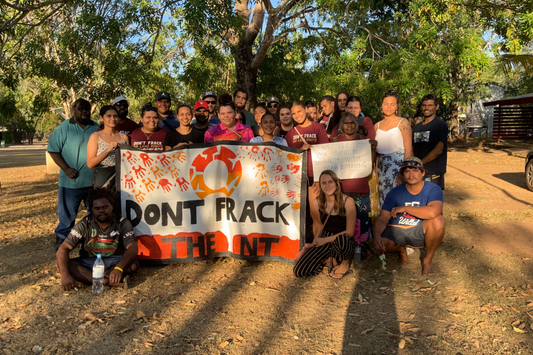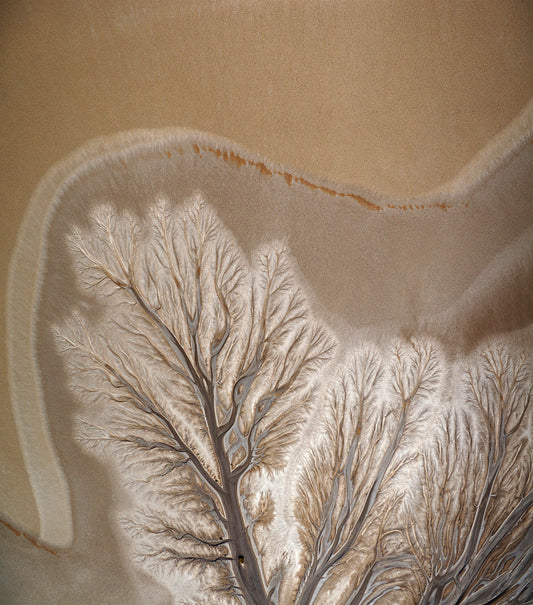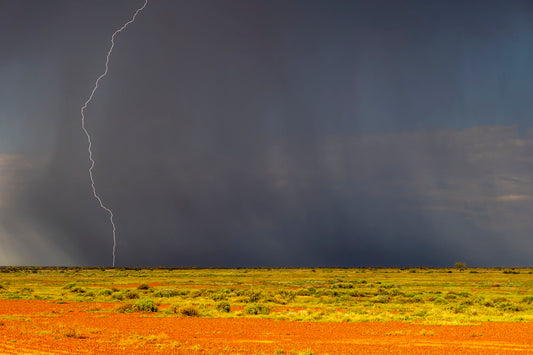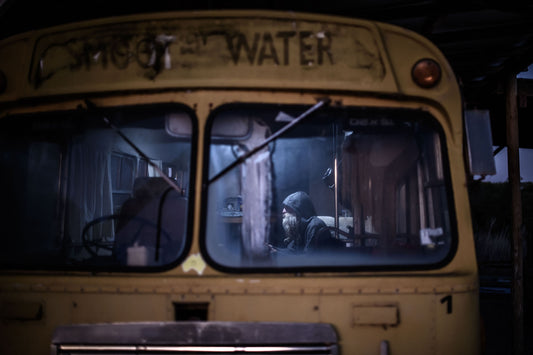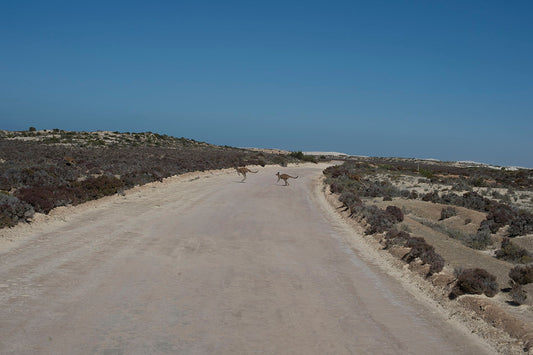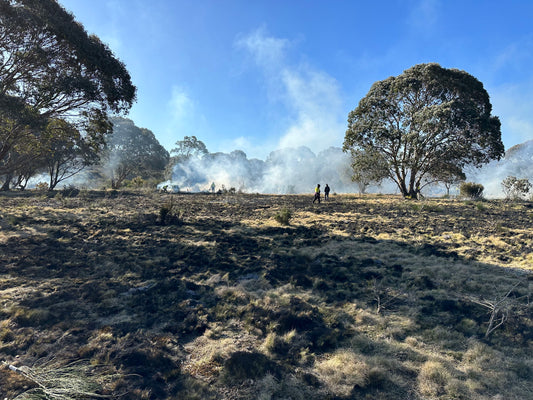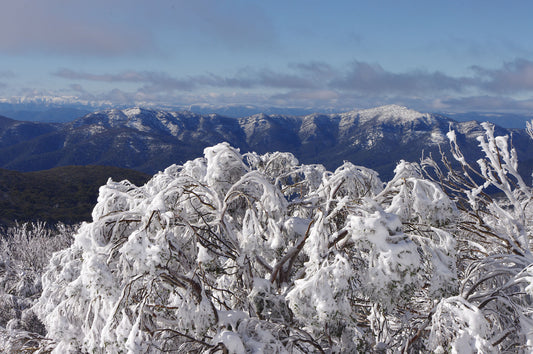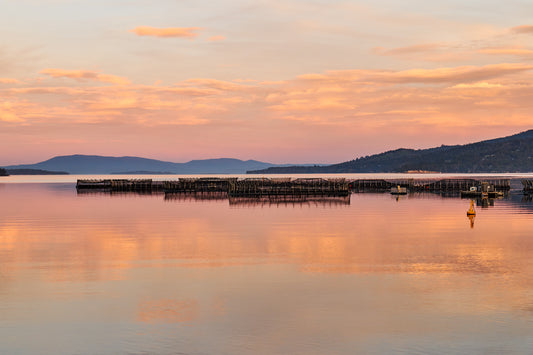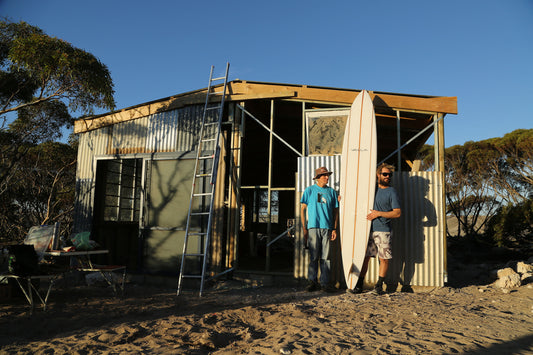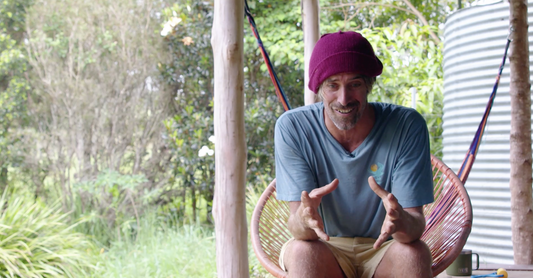Room with a view – the abandoned whaling station on Deception Island. Photo Ben Herrgott
Ben. We’re going to travel from Antarctica to Africa, via South America and Europe. But it's fully loose – there’ll be a few shortcuts and detours. Some of it will be by bike and some by boat. Surfing is definitely the passion that is driving these adventures, but it's often the cherry on the top. In the places we’re going, great surf isn't guaranteed, but it does help us to explore and see things in a different way.
We did a few trips to Alaska and Greenland and all sorts of cold weather places like Russia. We met different travellers, including a group of old salty sea dogs from Mavericks who had been to Antarctica in 2000. That made us very curious and in August 2021, we decided to do it. Most people said things like – that's not a great idea, or you're dreaming, or stop being stupid. But we started searching for a captain and a sailboat that would be open to taking us to the more exposed parts of Antarctica.
Why not? Ypake II – a 55-foot steel beauty, complete with lifting keel and wetsuit drying facilities – was Laura and Ben’s home for a month. Photo Laura Wilson.
Laura. We’re very aware that no trip comes without environmental cost, so we’re trying to find purpose and solutions wherever we go. We’re doing beach clean-ups and collaborating with environmental organisations to help out where we can. We spoke with marine campaigner Alistair [Allan] at the Bob Brown Foundation – who are trying to stop the destructive krilling industry in Antarctic waters. Krill is actually in a lot of health products on our supermarket shelves – we’re trying to raise awareness so that people do understand that some of the products they're buying are investing in this krill industry, which is impacting the ocean’s web of life.
Don’t forget the sun screen. Alex and Javier gear up for a standard surf reccy at the very ends of the earth. Photo Ben Herrgott
Ben. It was essential for us to find a steel boat with a lifting keel because there’s a lot of uncharted places on the western side of the Antarctic Peninsula, which means a lot of chances of hitting rocks. It took some time, but eventually we found both – Argentinian Captain Zeek and Ypake II (Argentinian slang for ‘and why not?’) – a 55-foot steel boat that was built for Antarctica by Zeek's Patagonian uncle. It's definitely not any kind of luxury boat – it's made to withstand rough conditions down south.
To make the journey financially viable, we had to find some people. The dream plan was to have surfers from different countries that we'd never met before. It took us almost two years to find everyone, but we ended up with an awesome crew. There were two brothers — Alex who is a really cool physicist from Montana who also makes beautiful timber surf boards and Patrick, an adventure racing athlete from Quebec.
Alex the physicist takes an extended polar break, swapping the peaks of Montana for some icy micro peelers. Photo Pili Sundblad
Laura. We came across Joe– a 24 year-old English shaper – we met him once briefly in Noosa. He loves surf and travelling for surf.
Ben. It took Joe just two days to decide to come along and he asked no questions. When he arrived in Ushuaia, he was carrying a keyboard, a guitar, a 1992 camcorder, a 1960s film camera, almost no technical gear and a shoelace instead of a belt.
Laura. Then there was Rachel – she's from Alaska and she was on the boat when we got rescued from Nagai Island in the Aleutians (that’s another story). Zeek brought along his co-captain Javier – who’s an Argentinian skipper, shoemaker and beekeeper – and his wonderful daughter Pili.
Ben. It was close quarters. We all slept in the same room, apart from a little curtain that covers the bed. The main living space doesn't have enough space for all of us to sit around the table, so we always had two people standing. That's for four or five weeks where you can't go to land a lot of the time and the boat can tilt at 30 degrees quite often.
Laura. Pick the smallest bedroom you can. We were all sleeping in that space and once we started surfing we had all our dripping wetsuits in there too, drying on ropes. It was quite a sight with the stinky booties. We were squishing in there, like sardines, and I thought, well, we might smell like it too by the end.
Ben. Captain Zeek explained that anyone cruising to Antarctica, well that’s like being dropped off at the top of Everest in a helicopter, whereas we're actually climbing it. Yeah it was tough, it felt we climbed Everest.
We departed on the 1st of January.
Froth levels are high as the crew don a few inches of rubber for their inaugural Antarctic surf. Photo Ben Herrgott
Laura. We set sail from Ushuaia [the capital of Tierra del Fuego, Argentina]. There’s a saying there – “Ushuaia fin del mundo, principio de todo” which means “end of the world, beginning of everything”. And so it was, I suppose.
We spent New Year's Eve on the boat, cracked open a bottle of champagne in 40 knots of wind. The boat was rocking, even though we were anchored. And then off we went, after a quick stop in Chile at Puerto Williams.
Ben. You come out of the Beagle Canal and you go around Cape Horn, which is a big deal as it's meant to be the roughest cape in the world.
Laura. We felt it. It was quite calm up until then. And then suddenly you get close.
Ben. It goes from ultra-deep ocean, at 1300 feet or so, to barely 300 in depth. There’s three oceans converging into the narrow passage that is the Drake, so it creates this real mess. People describe it as pulverising. It's almost like sitting on the Winkipop button with ten foot of swell, but trying to sail through it. It’s really uncomfortable. It's got no rhythm. The swell is coming in from every angle and the currents are out of control.
Laura. It took us five days to cross the Drake Passage, moving between five to seven knots per hour. I was so sick. It was like going to Luna Park, choosing the worst possible carnival ride, sitting on it for five days straight and not being able to get off, no matter how sick you feel.
Colour match – when your wax job fits right in with the local landscape. Ben gears up for a surf on the deck of Ypake II. Photo Laura Wilson
Ben. The visions you get of the Drake is like nothing we've seen before. It looks like huge waves pulling in crazy angles, but sometimes they roll beautifully under the boat. We saw these massive albatross flying and disappearing behind these waves and then reappearing. It's absolutely magic.
Hearing the waves crashing on top of the boat during the night, it was quite a feeling. We are inexperienced in sail boats. You’re so low to the water and the noise is unbelievable. It's expansive and it’s unnerving, knowing that you’re so far away from land. We all understood that it doesn't really matter – all of your survival suits and so on – if anything happens there, it's not ideal. You’re a dead man.
We saw our first penguins a few days in, which was exciting, but our first iceberg. Well. It was about 50 metres high and there were five perfect arches in it that cut straight through it. It was magnificent.
“Our first iceberg. Well. It was about 50 metres high and there were five perfect arches in it that cut straight through it. It was magnificent.” A monstrous slab with cathedral-like chambers that disappeared into the fog as the Ypake II sailed south. Photo Laura Wilson
Laura. The icebergs kept coming and coming and coming. This was really far off the coast of Antarctica. Most scientists said they've never seen so much ice leaving the continent, which is alarming.
Ben. We had made some decisions around where we were hoping to find waves, which was a big part of the logistical work and the research we'd done before setting off.
Laura. We headed straight to Deception Island, along the Antarctic Peninsula in the South Shetland Islands, 1000 kilometres from where we’d started.
Gentoo penguins take a breather from protecting their chicks and constructing a series of stone nests. Photo Laura Wilson
Wind up, heads down on a slow polar promenade around the Mars-like contours of Deception Island. Photo Laura Wilson
Ben. You're entering a crater of an active volcano, but because of erosion the sea is inside the crater so you can sail through. There’s small coves where you can go and find a good anchorage and protect yourself, however you can still get hundred knot winds within the crater. So we arrived, we dropped the anchor, we saw our first penguins on the shore. It was really gloomy weather. We had a few drinks to celebrate our first safe anchor.
Laura. Deception Island actually last erupted in 1967, ‘68 and 1970. It doesn't have a huge amount of snow or ice on it because the volcanic soil remains warm. There's hot springs on the island and an abandoned whaling station, which is really haunting to see. It looks a little bit like Mars. It's all black sand and snow, with barely any flora.
Ben. There's a big tourism industry around the Antarctic Peninsula where people go on expensive luxury cruise ships taking up to 300, 400 passengers and they all like to see this abandoned site and the penguin colonies. Apparently this has all exploded in the last three years.
Laura. It was full on, with this moving travellator of cruise ships coming in, dropping people off. It was mind boggling to see how many people were coming, taking selfies with penguins. They have mini submarines on board, discos, gyms. We heard stories of tour operators killing leopard seals further north from here to ensure there's enough penguin colonies because tourism relies on penguins, and the seals like eating them. The boats dont even turn off their engines, ever. They use the geolocator to remain on the spot instead of anchoring. You see these big fumes coming out which looks so out of place.
Ben. Our friends had heard of a scientist who had spotted a wave at Deception in ‘96. So they went there in 2000 and they found a wave. Doc – that’s Mark Renneker, Steve Hawk, Chris Malloy, Kevin Starr, Edwin Salem, Art Brewer and their friends – they managed to get the right conditions. Apparently Chris got a few turns in and it was a nice wave.
We spent six days around Deception and we did surf. We never got head high waves for the whole trip, but we got waist high waves there. Catching these mini waves with a penguin colony just above our head.
I even think that Laura and Rachel are the first women ever to surf Antarctica, which is kind of cool.
“Laura and Rachel are the first women ever to surf Antarctica, which is kind of cool.” Laura gets set to paddle into a penguin-heavy lineup. Photo Ben Herrgott
“Ben and Zeek spent a lot of time looking at charts, thinking outside the box and exploring other areas.” Even a special Surfline forecast didn’t help with navigating the intricacies of the peninsula’s unruly swells, tides and winds. Photo Laura Wilson
Laura. Well at least it was cause for a few drinks that night. There was an audience of penguins, and they were literally jumping in and around us. We all wore our six mill hooded wetsuits. We had booties and then neoprene socks under our booties. Mittens and vests too.
Ben and Zeek spent a lot of time looking at charts, thinking outside the box and exploring other areas. It was unbelievably difficult and frustrating to read the weather charts over there and to understand where the swell is going to hit.
Ben. All of our half-baked analysis didn't come to fruition. In the end, I even got in touch with Surfline through our Garmin. They were really willing to help, which was lovely. Their forecaster gave us a specific forecast for the regions where we were, but even then, there was nothing that correlated with what we actually saw.
The swell never came from where we thought it would and the winds never behaved as we thought they would. On the days where we had some beautiful wind swell, it just didn't make sense from where they came from. We just had to be lucky. So far, I think there's been five expeditions looking for surf in Antarctica and I think we’ve all struggled. But there’s surely got to be some beautiful waves out there.
“We all wore our six mill hooded wetsuits. We had booties and then neoprene socks under our booties. Mittens too.” Joe tests out the insulation levels. Photo Ben Herrgott
Opening image: Not Bali. Laura Wilson and Ben Herrgott are a pair of adventurous surf rats with a predilection for unusual travel destinations, the more remote the better. Photo Pili Sundblad
